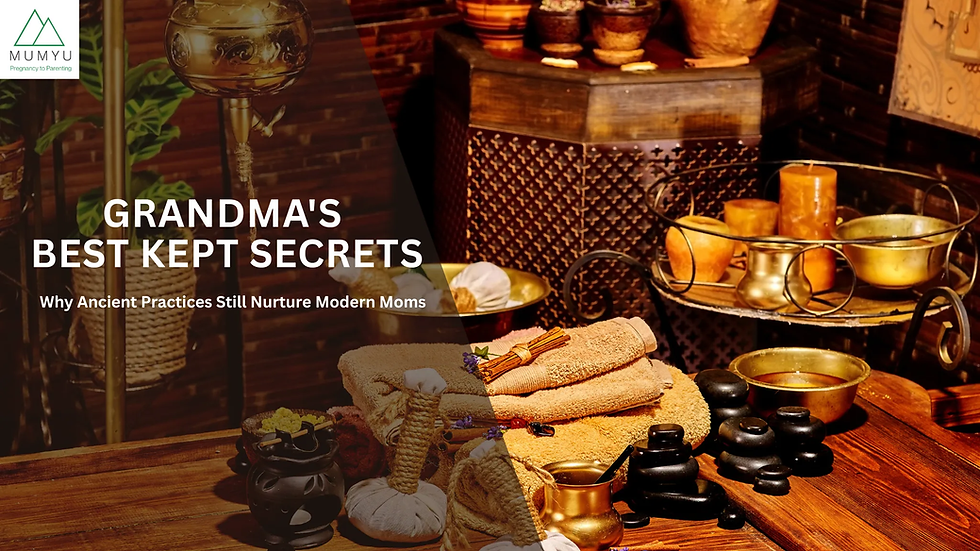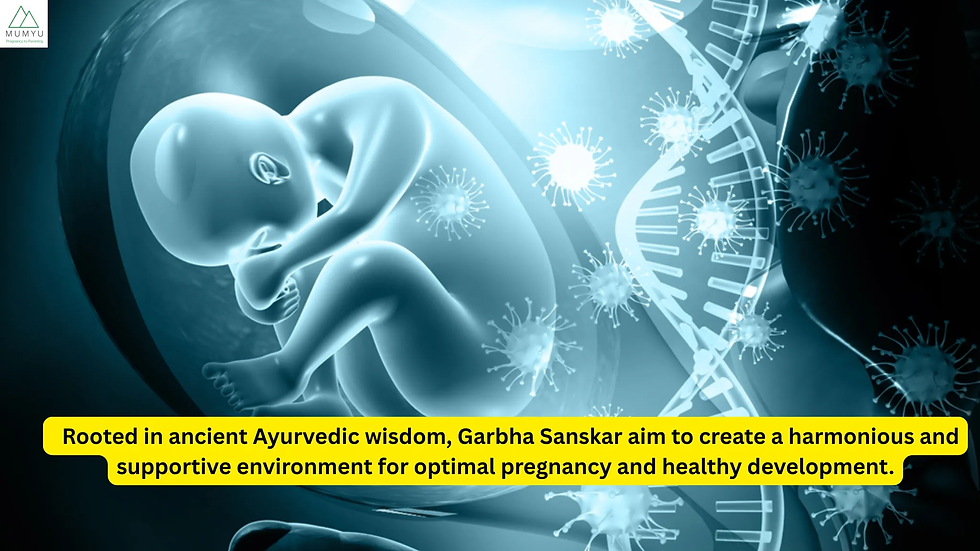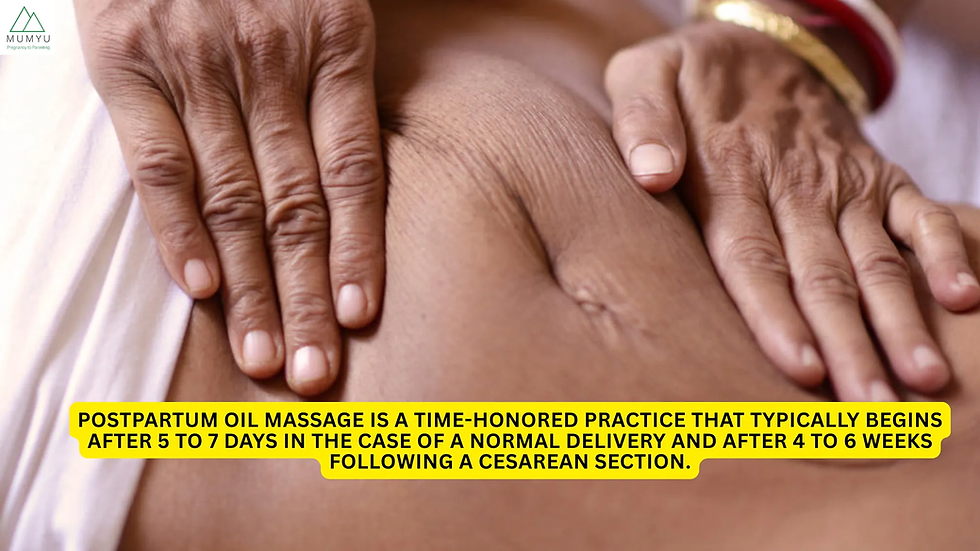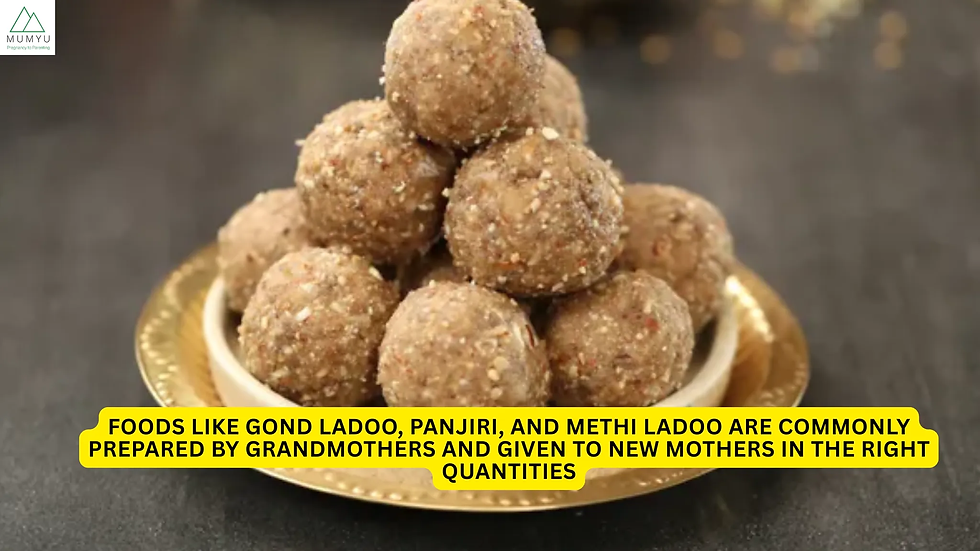Grandma’s Best Kept Secrets
- Shivani
- Jul 7
- 3 min read
Updated: Aug 29
When we look at traditional Indian parenting methods, there is a long list of timeless wisdom that has been passed down through generations. These timeless rituals are still relevant in 21 century. By incorporating this classical wisdom, modern women can make their motherhood journey easy and memorable.

In this blog, MUMYU brings the top 6 timeless wisdom that every woman should know. Let's discuss this grandma’s secret one by one.
Top 5 Grandma’s Best Kept Secrets
Garbha Sanskar:
Garbha Sanskar is an ancient ritual rooted in classical Ayurvedic texts such as Charaka Samhita, Sushruta Samhita, and Ashtanga Hridaya. It is a holistic pregnancy practice that supports the development of a mother and fetus. According to the ancient scripture Rigveda, as baby develop in the womb, they can absorb the energy around them, just as they can absorb vital nutrients from their mothers' food. Hence our great-grandmothers advise beginning Garbha Sankar as soon as the woman becomes pregnant.

Know the mystical magic and science of Garbha Sanker : Garbh Sanskar - Mystical Magic or Science?
Warm Milk with Ghee:
Drinking Warm Milk with ghee at night is a traditional practice advised by grandmothers. According to them, it helps in fetal development, balances hormones, and improves immunity and maternal health. In Kashyapa Samhita, a classical ayurvedic text, both Ghee and milk have been praised for enhancing ojas vitality. According to grandmothers, the best time for drinking warm milk with ghee is at night, because at night it helps to ease constipation, supports digestion, and promotes better sleep. But before changing your diet, always consult your doctor.

Gacchhi
Gacchhi or post-delivery belly support belt is an old age tradition found in several parts of India, including Himachal Pradesh. After childbirth, a long cloth is wrapped snugly around the new mother’s abdomen. It is believed that this practice provides gentle compression and support to the mother's abdominal muscles and organs and relieves back pain by improving posture. According to a meta-analysis study published in the National Library of Medicine show that abdominal binder after caesarean delivery supports faster recovery and reduces discomfort.

Read our blog on secret remedies presented by Indigenous midwives: 5 secret remedies by Indigenous midwives.
Postpartum Oil Massage:
Postpartum oil massage is a traditional practice that usually starts 5 to 7 days after a normal delivery, and 4 to 6 weeks after a C-section. Research shows that regular massage after childbirth can help reduce pain, improve blood flow, and ease feelings of anxiety and depression during recovery. In India, trained women called malishwalis often do these massages. They are experts in caring for new mothers and usually give daily massages using natural oils like sesame, coconut, or mustard oil. Malishwalis know how to choose the right oil and use special massage techniques based on the mother’s health and recovery needs.

Read our blog on Trained Maalishwali to know the benefits of oil massage: The Magic Touch: Trained Maalishwalis for New Moms
Thermal Care (Keeping Warm and Avoiding Cold Exposure)
It is common practice in a traditional Indian household to provide thermal care by giving warm and nourishing foods. Thermal care provides essential protection to postpartum and neonatal health. Research shows that Warm protection after delivery helps to prevent hypothermia, stabilize circulation, and improve healing in both the mother and the child. Grandmothers prepare foods such as Gond Ladoo, Panjiri, and Methi Ladoo, which are strategically served to postpartum women.

If you enjoyed reading this blog, read our latest article on Pregnancy yoga : Breathe, Stretch, Glow: SAFE Pregnancy Yoga Poses for a Healthy Journey
DISCLAIMER - These ancient practices are shared with the intent of conveying traditional knowledge that has scientific backing. To practice such a ritual, please consult an experienced and certified midwife and birth caregiving practitioner.












































Comments